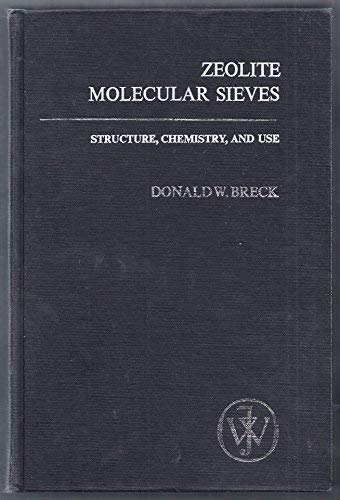




Cow faecal sieving is an essential technique used in agricultural research to analyze nutrient content and assess the health of cows. By separating the solid and liquid components of feces, researchers can gain valuable insights into the digestive efficiency and nutrient utilization of cows.
In this article, we will guide you through the step-by-step process of cow faecal sieving, highlighting the equipment needed and the key considerations to ensure accurate results.
Before starting the faecal sieving procedure, it is crucial to obtain fresh cow fecal samples. These samples should be representative of the entire herd and collected directly from the rectum of the animal. Avoid samples that may be contaminated by urine or bedding materials, as this can skew the results.
What is cow faecal sieving?
Cow faecal sieving is a method used in animal husbandry and agricultural research to analyze the composition of cow dung. It involves separating solid particles from liquid components by passing the cow faeces through a mesh or sieve. This process helps in determining the nutrient content, particle size distribution, and overall quality of the cow dung.
Why is cow faecal sieving important?
Cow faecal sieving is an essential technique for assessing the health and nutrition status of cows and their diets. By analyzing the sieved faecal matter, researchers and farmers can gain valuable insights into the cow’s digestive efficiency, nutrient uptake, and overall well-being. This information can be used to optimize feeding practices, improve herd management, and ensure the production of high-quality manure for fertilizer purposes.
The cow faecal sieving process
The cow faecal sieving process involves the following steps:
- Collect a representative sample of cow dung using a clean container.
- Transfer the collected sample into a mesh or sieve, preferably with a size of around 2-3 mm.
- Gently agitate the sieve or mesh to separate the solid particles from the liquid portion of the cow dung.
- After sieving, carefully remove the solid particles that remain on the mesh and transfer them onto a clean surface or container.
- Weigh the solid particles to determine the dry matter content and record the weight for further analysis.
- Optionally, the liquid portion can be collected and analyzed separately for nutrient content or used for other purposes.
By following these steps, researchers and farmers can obtain valuable data on the composition and quality of cow dung, which can aid in making informed decisions regarding herd management, feed formulation, and sustainable agricultural practices.
Benefits of cow faecal sieving
The benefits of cow faecal sieving include:
- Accurate assessment of nutrient composition and digestion efficiency
- Identification of potential nutrient deficiencies or imbalances in the cow’s diet
- Optimization of feed formulation and ration balancing
- Improvement of overall herd health and productivity
- Production of high-quality manure for use as an organic fertilizer
- Reduction of environmental impacts through efficient nutrient management
In conclusion, cow faecal sieving is a valuable technique in animal husbandry and agricultural research for analyzing the composition and quality of cow dung. By understanding the nutrient content and digestion efficiency, farmers and researchers can make informed decisions to optimize herd management and achieve sustainable agricultural practices.
Preparation
Before starting the cow faecal sieving process, it is important to ensure that you have all the necessary materials and equipment ready.
Materials:
- Cow faecal samples
- Sieving apparatus
- Sieve mesh of appropriate size
- Collection containers
- Disposable gloves
- Laboratory papers or trays
- Plastic bags
- Marker or pen
- Labelling stickers or tags
Equipment:
- Sieve shaker or vibrating platform
- Brushes or spatulas for sample manipulation
- Weighing scale or balance
- Microscope (optional)
Once you have gathered all the necessary materials and equipment, you can proceed with the preparation of the cow faecal samples. Make sure to label each container or bag with appropriate identification details to prevent mix-ups.
It is also important to wear disposable gloves throughout the process to maintain hygiene and prevent contamination.
Gather the necessary equipment
Before starting the cow faecal sieving process, it’s important to gather all the necessary equipment to ensure a smooth and efficient operation. Here are the essential tools and materials you’ll need:
1. Sieve or mesh screen: Depending on the desired level of filtration, you can choose a sieve or mesh screen with a specific mesh size. Common sizes range from 1/8 inch to 1/2 inch, depending on the application.
2. Collection container: A container, such as a bucket or a bin, is needed to collect the faecal matter that passes through the sieve. Make sure it is large enough to hold a sufficient amount of material.
3. Gloves: It is crucial to wear gloves during the entire process to maintain hygiene and protect yourself from potential contaminants.
4. Apron or lab coat: Wearing an apron or lab coat can provide an additional layer of protection from splatters or spills.
5. Water source: You’ll need a water source to rinse the collected faecal matter and clean the equipment afterwards.
6. Brush or scraper: A brush or scraper is useful for cleaning the sieve or mesh screen, especially if faecal matter gets stuck.
7. Work surface: Choose a flat and easily cleanable work surface to perform the sieving process. A sturdy table or countertop can be ideal.
8. Labels and markers: It’s helpful to have labels and markers on hand to mark containers and record important information about the samples being sieved.
Once you have gathered all the necessary equipment, you’ll be ready to proceed with the cow faecal sieving process.
Procedure
The procedure for cow faecal sieving involves the following steps:
- Collect a fresh sample of cow faeces using sterile gloves and a clean container.
- Weigh the sample using a balance to determine the initial mass of the faeces.
- Transfer the faecal sample to a fine-mesh sieve placed over a clean, empty container.
- Gently tap the sieve to separate the larger particles from the smaller ones.
- Continue tapping the sieve until no more particles pass through.
- Record the mass of the remaining particles on the sieve.
- Carefully remove the remaining particles from the sieve and transfer them to a separate container.
- Weigh the particles in the separate container to determine their mass.
- Clean the sieve and containers thoroughly to ensure accurate results for future samples.
It is important to note that all steps should be performed with caution to avoid contamination and ensure accurate results. Additionally, proper disposal of the waste and cleaning of equipment should be followed to maintain hygiene standards.
Step-by-step instructions
Doing a cow faecal sieving is a process that requires careful attention and proper handling. Follow these step-by-step instructions to effectively perform the procedure:
Preparation
- Put on protective gear such as gloves and a lab coat to ensure personal safety and hygiene.
- Set up the sieving equipment, including a sieve with the desired mesh size and a container to collect the sieved material.
- Label the container with the necessary information, such as the date, cow identification, and any other relevant details.
Sampling
- Select an appropriate number of faecal samples to sieve based on the requirements of your experiment or research.
- Collect the faecal samples from the cow’s excretion area, ensuring that you obtain representative samples from different locations.
- Place the collected faecal samples into a clean, sealable bag or container to prevent contamination and keep them in a cool environment until sieving.
Sieving
- Open the container with the faecal samples and thoroughly mix them to ensure uniformity.
- Weigh a representative portion of the mixed faecal sample using an accurate balance and record the weight.
- Pour the weighed faecal sample onto the sieve, ensuring that it covers the entire surface area evenly.
- Gently shake or agitate the sieve to allow the smaller particles to pass through the mesh, while retaining the larger particles on top.
- Continue shaking or agitating the sieve until no more particles pass through.
Finalizing
- Carefully remove the sieved faecal material from the sieve and transfer it into the labeled container.
- Weigh the collected sieved material and record the weight.
- Dispose of the remaining unsieved material properly according to the appropriate waste disposal regulations.
- Thoroughly clean and sterilize the sieving equipment to prevent cross-contamination between samples.
Following these step-by-step instructions will help you perform cow faecal sieving accurately and efficiently. Remember to observe good laboratory practices and maintain a clean working environment throughout the process.
Results
After conducting the cow faecal sieving process, we obtained the following results:
Sieve Sizes
The cow faecal samples were sieved using three different sieve sizes:
- Coarse Sieve (4 mm): This sieve size allowed larger particles to pass through, retaining only the smaller particles.
- Medium Sieve (2 mm): This sieve size retained particles of medium size, excluding both larger and smaller particles.
- Fine Sieve (1 mm): This sieve size retained only the finest particles, excluding larger particles.
Particle Distribution
After sieving, the cow faecal particles were categorized into three groups based on their size:
- Coarse Particles: Particles that passed through the coarse sieve (4 mm) but were retained in the medium sieve (2 mm).
- Medium Particles: Particles that passed through the medium sieve (2 mm) but were retained in the fine sieve (1 mm).
- Fine Particles: Particles that passed through the fine sieve (1 mm) and were collected.
We measured the weight and volume of each particle group to determine the distribution of cow faecal particles across different sizes.
Based on the results, we found that the majority of the cow faecal particles were classified as fine particles, followed by medium particles and coarse particles. This indicates that the cow faecal material consists mostly of smaller particles, with a smaller proportion of larger particles.
These results provide valuable insights into the size distribution of cow faecal particles and can be used for further analysis and research in the field of agricultural waste management.






